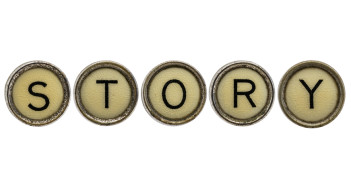
The Psychologist’s View of UX Design
Editor’s note: This is a must-read for any learning designer. Psychologist and cognitive scientist Dr. Susan Weinschenk explains the impact of psychology on design and human interaction.

Editor’s note: This is a must-read for any learning designer. Psychologist and cognitive scientist Dr. Susan Weinschenk explains the impact of psychology on design and human interaction.

Editor’s note: This article clearly defines user experience and how it relates to usability and user-centred design. There are some great examples of good and poor US design too.

Editor’s note: Doug Shaw shared this article in our recent Action for Digital Literacy experiment. There is some great advice here on how to set goals and achieve what you want to achieve.

Editor’s note: PA Consulting’s Nick Shackleton-Jones provides a set of simple suggestions to help you do things differently this year.

Editor’s note: Management professor and journalist Stefan stern provides some good tips for managers on how to survive the coming year.

Editor’s note: Tis the season of trends articles and predictions for the New Year. These predictions feel a bit tongue in cheek but are all the better for that. Pragmatic and realistic, which we like.

Editor’s note: Economist Tim Harford brings some perspective to the robots are taking our jobs narrative (myth).

Editor’s note: This is the inaugural lecture of Professor Nick van Dam, professor of corporate learning and development at Nyenrode Business University in The Netherlands. It covers the changing landscape of learning, how humans learn and how L&D needs to respond. A long, very worthwhile read.

Editor’s note: I suspect most L&D professionals know what constitutes modern learning content. If you are in any doubt then this research will help as it is based on data of the content preferences of 5,000 workers.

Very interesting read on performance support. You may find the difference between blackbox and glassbox performance support useful when designing these types of interventions.

An excellent resource on chatbots, including links to articles explaining what they are and how the technology works. Includes many examples of chatbots too.

Editor’s note: Congratulations to all the winners in the TJ Awards 2017. Following hot on the heals of the Learning Technologies Awards, we have another set of learning projects to look through.

Editor’s note: LinkedIn has analysed its own data from the last five years to see what skills are on the rise. It uses US data but nevertheless is quite eye-opening around demand for less technical skills.

Editor’s note: A couple of good examples here of older workers bringing their knowledge and experience to bear on younger workers. One would hope that organisations recognise the value of older workers whether you call them elders or not.

Towards Maturity have launched the first part of their 2017-2018 benchmark report. This year Towards Maturity has taken a different approach to sharing the data and as ever it is a must-read to see how L&D is doing when it comes to embracing learning technology.
